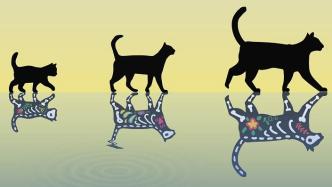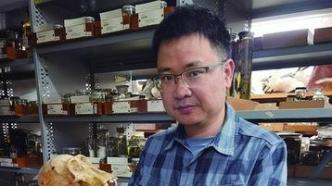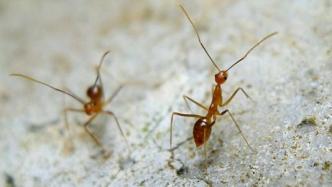
Scientists have so far managed to allow atoms or molecules to be in two positions at the same time - the so-called "superposition" state, realizing the "Schrödinger's cat" effect. In a new study, scientists at the Swiss Federal Institute of Technology (ETH) in Zurich put a tiny crystal that "weighs" 16 micrograms (billions of times the mass of an atom or molecule) into a superposition of two oscillating states, creating the The heaviest "Schrödinger's cat" to date. The research, published in the journal Science on the 20th, is expected to lead to larger and more robust qubits and be used to detect gravitational waves or dark matter.
"Schrödinger's cat" is a thought experiment proposed by the famous Austrian physicist Edwin Schrödinger: a cat is kept in an airtight container containing a small amount of radium and cyanide.
The decay of radium has a probability. If the radium decays, the mechanism will be triggered to smash the bottle containing cyanide, and the cat will die; if the radium does not decay, the cat will survive. According to the theory of quantum mechanics, since the radioactive radium is in a superposition of decay and non-decay states, the cat is in a superposition of dead/alive states. This cat, which is both dead and alive, is the so-called "Schrödinger's cat".
The researchers succeeded in creating a so-called "Schrödinger's cat" using an oscillating crystal, in which the oscillating crystal represents the cat and a superconducting circuit represents the qubit. The link between the qubit and the "cat" is not a counter and a poison, but a layer of piezoelectric material, a crystal that changes shape when oscillated, creating an electric field. This electric field can be coupled with the electric field of the qubit, and the superposition state of the qubit can be transferred to the crystal, so that the crystal can oscillate up and down at the same time. This crystal weighing 16 micrograms in the superposition state has thus become the heaviest Schrödinger so far. s cat".
The research team hopes to further improve the mass limit of "Schrödinger's cat" to better understand why quantum effects are not detected in the real macroscopic world. In addition, the latest research promises to lead to larger, more robust qubits. Moreover, massive objects in a superposition state are extremely sensitive to external noise, and can also be used to accurately measure small disturbances such as gravitational waves or detect dark matter.
(Originally titled "The appearance of the heaviest "Schrödinger's cat" so far is expected to lead to larger and more robust qubits")


